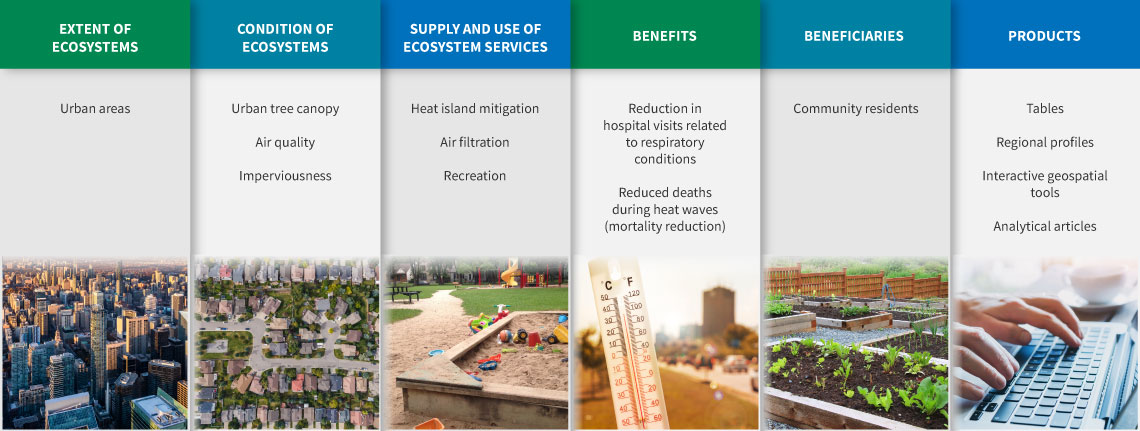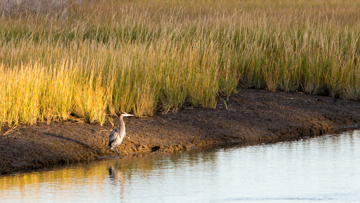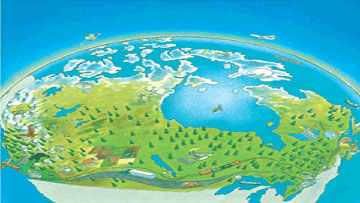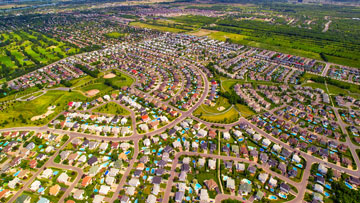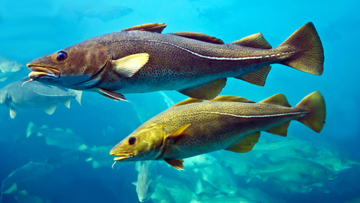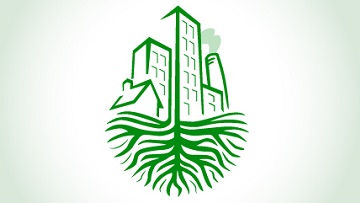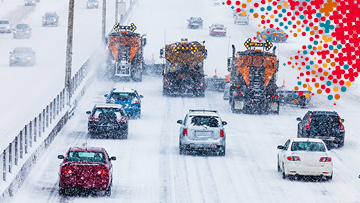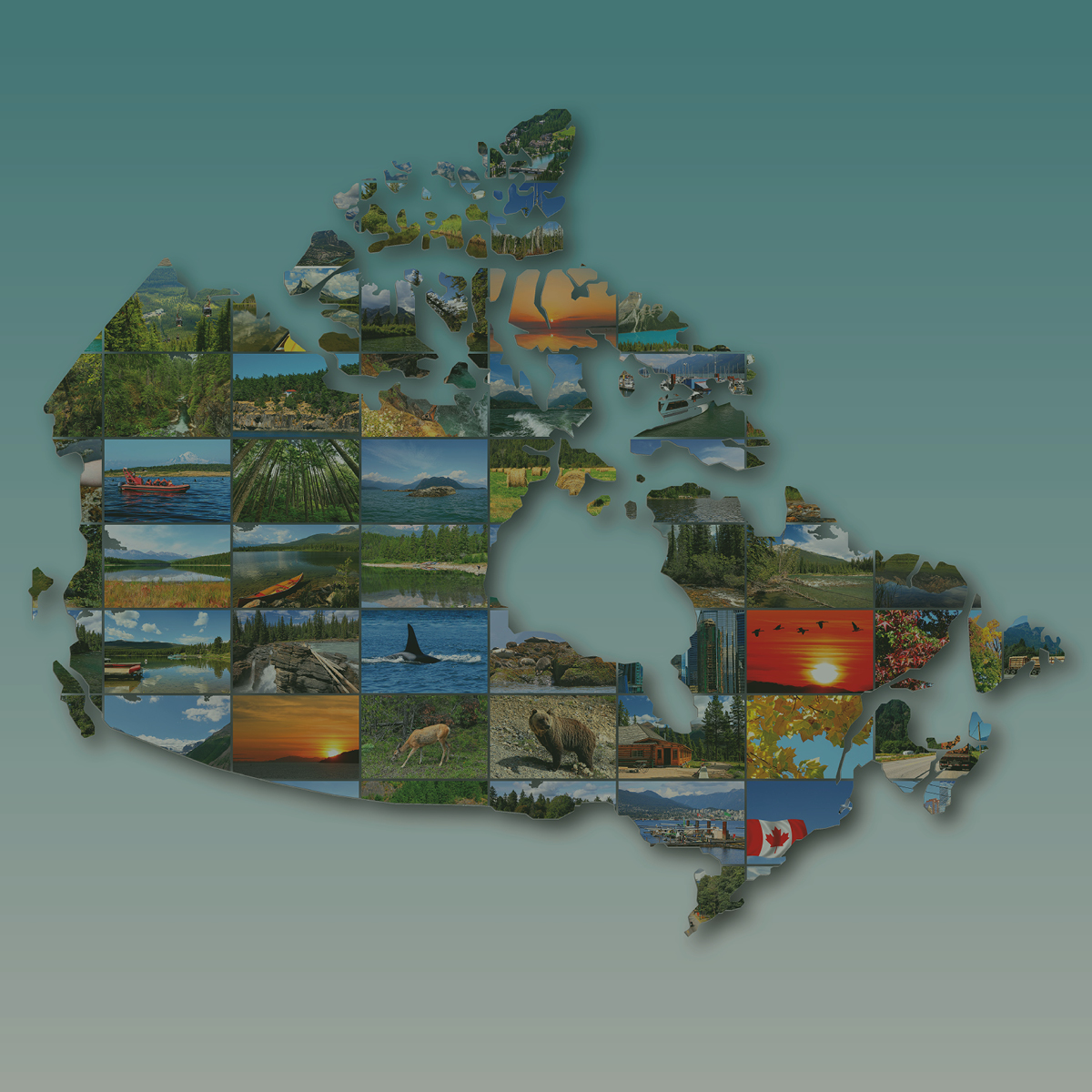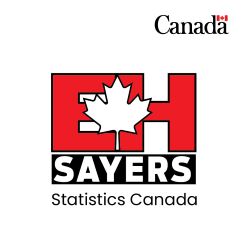Farm Management Survey - 2021 - Livestock Modules
Getting Started
Why do we conduct this survey?
The Farm Management Survey is conducted in collaboration with Agriculture and Agri-Food Canada, to ensure that agriculture programs reflect the changing way resources are being managed on today's farms. The data collected contribute to the establishment of baselines and development of updates for an expanded set of agri-environmental indicators.
These indicators are needed to:
- determine the present status of farm environmental management across Canada
- identify areas that are most in need of programs to promote environmental management practices
- generate the information to design effective and well targeted policy and program responses.
Your information may also be used by Statistics Canada for other statistical and research purposes.
Although voluntary, your participation is important so that the information collected is as accurate and complete as possible.
Other important information
Authorization to collect this information
Data are collected under the authority of the Statistics Act, Revised Statutes of Canada, 1985, Chapter S-19.
Confidentiality
By law, Statistics Canada is prohibited from releasing any information it collects that could identify any person, business, or organization, unless consent has been given by the respondent, or as permitted by the Statistics Act. Statistics Canada will use the information from this survey for statistical purposes only.
Record linkages
To enhance the data from this survey and to reduce the response burden, Statistics Canada may combine the acquired data with information from other surveys or from administrative sources.
Data-sharing agreements
To reduce respondent burden, Statistics Canada has entered into data-sharing agreements with provincial and territorial statistical agencies and other government organizations, which have agreed to keep the data confidential and use them only for statistical purposes. Statistics Canada will only share data from this survey with those organizations that have demonstrated a requirement to use the data.
Section 11 of the Statistics Act provides for the sharing of information with provincial and territorial statistical agencies that meet certain conditions. These agencies must have the legislative authority to collect the same information, on a mandatory basis, and the legislation must provide substantially the same provisions for confidentiality and penalties for disclosure of confidential information as the Statistics Act. Because these agencies have the legal authority to compel businesses to provide the same information, consent is not requested and businesses may not object to the sharing of the data.
For this survey, there are Section 11 agreements with the provincial and territorial statistical agencies of Newfoundland and Labrador, Nova Scotia, New Brunswick, Quebec, Ontario, Manitoba, Saskatchewan, Alberta and British Columbia. The shared data will be limited to information pertaining to business establishments located within the jurisdiction of the respective province.
Section 12 of the Statistics Act provides for the sharing of information with federal, provincial or territorial government organizations.
Under Section 12, you may refuse to share your information with any of these organizations by writing a letter of objection to the Chief Statistician, specifying the organizations with which you do not want Statistics Canada to share your data and mailing it to the following address:
Chief Statistician of Canada
Statistics Canada
Attention of the Director, Environment and Energy Statistics Division
150 Tunney's Pasture Driveway
Ottawa, Ontario
K1A 0T6
You may also contact us by email at statcan.esd-helpdesk-dse-bureaudedepannage.statcan@canada.ca or by fax at (613) 951-6583.
For this survey, there are Section 12 agreements with the statistical agency of Prince Edward Island, as well as the Ontario Ministry of Agriculture, Food and Rural Affairs; Alberta Agriculture and Rural Development, Manitoba Agriculture and Resource Development; Agriculture and Agri-Food Canada, and Environment and Climate Change Canada.
For agreements with provincial government organizations, the shared data will be limited to information pertaining to business establishments located within the jurisdiction of the respective province.
Important features
To navigate the questionnaire
Use the Previous and Next buttons located at the bottom right of each page.
Do not use the navigation buttons at the top of your browser or the corresponding shortcut keys.
Based on your answers to certain questions, the questionnaire will automatically skip any questions or sub-questions that do not apply to your situation.
Session timeout
After two hours of inactivity, your session will time out. You will not be able to access any of your unsaved information.
Save and finish later
If you cannot complete the questionnaire in one session, you can save the information you have entered by pressing the Save and finish later button. This button is located at the bottom left of any page where you are asked to enter information. You can then resume your session at another time.
Please be advised that information from partially completed or unsaved questionnaires may be retained and used for statistical and research purposes.
Definitions and explanations
A help button is available for certain questions. Press this button for additional information or clarification.
Survey Purpose
The survey collects information about the management practices used on Canadian farms.
Survey results will help Agriculture and Agri-Food Canada measure the use of these practices in the agriculture industry, and will support their development of effective agricultural programs.
The information you provide may also be used by Statistics Canada for other statistical and research purposes.
Dairy inventory
The first questions are about livestock kept on this operation.
Q1. How many of the following types of dairy cattle are currently on this operation?
Include:
- all cattle on this operation, regardless of ownership, including those that were boarded, custom fed, or fed under contract
- all cattle kept by this operation regardless of ownership that were pastured on a community pasture, grazing co-op, or public land for part of the year.
Exclude animals owned by this operation but kept on a farm, ranch or feedlot operated by someone else.
If there are no animals for a specific type, please indicate 0.
Number of dairy cattle
- Milking cows
- Dry cows
- Replacement heifers, one year and over
- Calves, under one year
Further questions will focus on the management practices for one specific type of dairy cattle.
Q2. Please select the cattle type to be used to answer the following questions.
- Milking cows
- Dry cows
- Replacement heifers, one year and over
- Calves, under one year
Beef inventory
The first questions are about livestock kept on this operation.
Q1. How many of the following types of beef cattle are currently on this operation?
Include:
- all the cattle on this operation, regardless of ownership, including those that were boarded, custom fed, or fed under contract
- all cattle kept by this operation regardless of ownership that were pastured on a community pasture, grazing co-op, or public land for part of the year.
Exclude animals owned by this operation but kept on a farm, ranch or feedlot operated by someone else.
If there are no animals for a specific type, please indicate 0.
Number of beef cattle
- Finishing heifers and steers
- Backgrounding heifers and steers
- Cows
- Replacement heifers
- Bulls
- Calves, under one year
Additional questions will focus on the management practices for one specific type of beef cattle.
Q2. Please select the cattle type to be used to answer the following questions.
- Finishing heifers and steers
- Backgrounding heifers and steers
- Cows
- Replacement heifers
- Bulls
- Calves, under one year
Q3. In 2021, how many months were these [beef cattle] kept primarily in the following areas?
Number of months
- An outdoor confined area
Include pens, corrals, drylots, exercise pads.
A fenced up outdoor area where livestock movement is restricted and manure deposits are eventually removed. - An open field or pasture
Natural or planted pasture or cropland used for grazing or feeding. - A building
Any fixed structure with a roof and some walls that confines or provides protection for livestock in one location.
Q4. At what reproductive stage are the majority of the [beef cattle] currently on this operation?
Cows
- Lactating
- Dry or pregnant
Replacement heifers
- Unbred
- Pregnant
Bulls
- Growing immature bulls
- Mature breeding bulls
Poultry inventory
The first questions are about poultry kept on this operation.
Q1. During one production cycle, how many of the following types of birds were on this operation and how many buildings were used to house each type of bird in 2021?
Include all the poultry on this operation, regardless of ownership, including those that were boarded, custom fed, or fed under contract.
Exclude animals owned by this operation but kept on a farm, ranch or feedlot operated by someone else.
If there are no birds of a specific type, please indicate 0.
Number of birds Number of buildings to house birds
Chickens for Table Eggs
- Pullets less than 19 weeks
- Laying hens 19 weeks and over
Birds for meat
- Broilers, roasters, Cornish
- Turkeys
Birds for Breeding
Include hens and pullets.
- Egg layer breeders
- Broilers, roasters, Cornish breeders
- Turkey breeders
Other poultry
- Other poultry
e.g., geese, ducks, roosters, ostriches, emus, pheasants, quail, pigeons
Specify other poultry
Pig inventory
The first questions are about livestock kept on this operation.
Q1. During one production cycle, how many of the following types of pigs were on this operation?
Include all pigs on this operation, regardless of ownership, including those that were boarded, custom fed, or fed under contract.
Exclude pigs owned by this operation but kept on a farm, ranch or feedlot operated by someone else.
If this question does not apply, please indicate 0.
Number of pigs
- Weaner, nursery or starter pigs
Under 45 lb. or less than 20 kg - Grower and finishing pigs
45 lb. or 20 kg and over - Nursing pigs
- Sows and gilts for breeding
- Boars
Additional questions will focus on the management practices for one specific type of pig.
Q2. Please select the pig type to be used to answer the following questions.
- Weaner, nursery or starter pigs
- Grower and finishing pigs
- Sows and gilts for breeding
- Boars
Q3. Please indicate the growth stage of the majority of the [pigs] currently on this operation.
Weaner, nursery and starter pigs
- Early nursery
- Late nursery
Grower and finishing pigs
- Grower
- Finishing
Sows and gilts
- Growing unbred gilts
- Gestating sows
- Bred gilts
- Lactating sows
Boars
- Growing immature boars
- Mature breeding boars
Animal inventory
Q1. Did a veterinarian recently examine or is knowledgeable about the livestock on this operation?
- Yes
- No
Q2. Was a veterinarian or another professional consulted to develop a prevention-focused health program for livestock health?
Note: Press the help button (?) for additional information.
- Yes
- No
- Don't know
What was included in this prevention-focused health program?
Select all that apply.
- Biosecurity measures
e.g., disease spread prevention, like isolating new animals and checking for early symptoms of diseases. - Vaccination
- Parasite control
- Breeding soundness examinations
e.g., checking for safe and proper insemination and pregnancies - Ration development and supplementation adapted to livestock specific needs
- Management of painful procedures
- Other
Specify the other elements
OR - None of the above
Q3. Are there any other livestock or poultry currently on this operation?
- Yes
- No
Q4. How many of the following are currently on this operation?
Include:
- all animals on this operation, regardless of ownership, including those that are boarded, custom fed, or fed under contract
- all animals kept by this operation regardless of ownership that were pastured on a community pasture, grazing coop, or public land for part of the year.
Exclude animals owned by this operation but kept on a farm, ranch or feedlot operated by someone else.
Note: Press the help button (?) for additional information.
Number
- Dairy cattle
Include all types and ages for breeding or milk production. - Beef cattle
Include all types and ages for breeding or meat production. - Pigs
Include all types and ages for breeding or meat production. - Poultry
Include all types and ages for breeding, meat, or egg production. - All other animals
Specify all other animals
Housing management (Dairy and Beef)
For the following questions, consider only the building containing the largest number of [milking cows/beef cattle].
Q1. In 2021, how many of each of the following types of dairy cattle were housed in this building containing the largest number of milking cows?
Number of dairy cattle
- Milking cows
- Dry cows
- Replacement heifers, one year and over
- Calves, under one year
Q2. In 2021, which of the following practices were used to maintain the air quality in and around this building containing the largest number of milking cows?
Select all that apply.
- Forced ventilation with fans
Did this system have an air filter?- Yes
- No
- Natural ventilation
e.g., windows, curtains, exhaust vents
Was this system adjusted automatically?- Yes
- No
- Water misters or coolers
- Electrostatic precipitators to reduce dust
- Air exchangers
- Large tree shelterbelts adjacent to the building
- Other practices
Specify other practices
For the following questions, consider only the building containing the largest number of [milking cows/beef cattle].
Q3. Which of the following housing designs best describes the system used in this building?
- Tie stall
- Free stall
- Common bedding pack area
- Other system
Specify other system
Q4. In 2021, what type of milking system was used on this operation?
- Milking parlour
- Robotic system
- Other system
Specify other system
The following questions concern practices related to the area of this building where milking cows are kept.
Q5. In 2021, what type of material was primarily used for bedding for [milking cows/beef cattle] in this building?
- Sawdust, shavings, bark mulch, other forest product
- Straw or crop residue
- Recycled or processed manure solids
- Sand, gravel, or other mineral product
- Synthetic mat or mattress
e.g., rubber, foam, gel, water - Other material
Specify other material - No material used
Q6. In 2021, approximately, how often was the bedding area refreshed with new bedding material?
- At least once a day
- At least once every two days
- At least once every three days
- At least once a week
- At least once every 2 weeks
- At least once a month
- Other frequency
Specify other frequency
Q7. What was the main base material below the bedding in this building?
- Concrete
- Clay layer
- Sand or gravel layer
- Other soil type
Specify other soil type - Other material
Specify other material
Q8. In 2021, what was the most common floor material for cattle alleys and walkways in this building?
- Solid, smooth concrete
- Slatted concrete over manure storage
- Anti-slip concrete (grooved, stamped, etched, aggregate)
- Rubber
- Other floor material
Specify other floor material
Q9. In 2021, what method was used to clean manure from alleys, walkways, and gutters in this building?
Exclude holding pens used prior to milking.
Select all that apply.
- Tractor or skid steer
- Automated scrapers (chain or cable)
- Flushed with water
- Other method
Specify other method
Q10. In 2021, did the [dairy/beef] cattle in this building have access to an outdoor confined area?
Include pens, corrals, drylots and exercise pads.
An outdoor confined area is an area where livestock movement is restricted and manure deposits are eventually removed offsite.
- Yes
- No
Q11. During which seasons are the [dairy/beef] cattle from this building provided access to an outdoor area?
Select all that apply.
- Spring
- Summer
- Fall
- Winter
OR - All year
For the following questions, consider only the outdoor confined area containing the largest number of [dairy/beef] cattle.
Q12. What was the main base material of this outdoor confined area?
- Concrete
- Clay layer
- Sand or gravel layer
- Other soil type
Specify other soil type - Other material
Specify other material
Q13. In 2021, which of the following activities occurred in this outdoor confined area?
Select all that apply.
- Watering
- Exercising
- Feeding
- Provided material for bedding
e.g., sawdust, straw - Observed cattle for heat detection
Q14. In 2021, what type of material was used for bedding in this outdoor confined area?
Select all that apply.
- Sawdust, shavings, bark mulch, other forest product
- Straw or crop residue
- Recycled or processed manure solids
- Sand, gravel or other mineral product
- Other material
Specify other material
OR - No material was used
Q15. In 2021, approximately, how often was the bedding area refreshed with new bedding material in this outdoor confined area?
- At least once a day
- At least once a week
- At least once a month
- Less frequently than once a month
Specify frequency
Q16. In 2021, approximately how often was manure or soiled bedding removed from this outdoor confined area?
- At least once a day
- At least once a week
- At least once a month
- Less frequently than once a month
Specify frequency - At least once a month
- At least once every 3 months
- At least once every 6 months
- Less frequently than once every 6 months
Specify frequency
Q17. In 2021, which of the following features were present in or next to this outdoor confined area?
Select all that apply.
- Protection from wind
e.g., windbreaks, trees shelterbelts, shelter structures - Roof
- Diversion of upstream surface water around confined area
- Containment of runoff water flowing out of the confined area
OR - None of the above
Housing management (Pig)
The next questions are about the building containing the largest number of [pigs].
Q1. In 2021, how many of the following pig types were in this building on a typical day of full production?
- Weaner, nursery or starter pigs
- Grower and finishing pigs
- Nursing pigs
- Sows and gilts for breeding
- Boars
Q2. In 2021, what was the average number of weaner, nursery or starter pigs kept per pen?
Average number
Q3. What was the average pen size for these pigs?
Please indicate the unit of measure used.
Average pen size Unit of measure
Q4. In 2021, what was the average number of grower and finishing pigs kept per pen?
Average number
Q5. What was the average pen size for these pigs?
Please indicate the unit of measure used.
Average pen size Unit of measure
Q6. In 2021, what was the average number of sows and gilts kept per pen when they were gestating?
Average number
Q7. What was the average pen size for these pigs?
Please indicate the unit of measure used.
Average pen size Unit of measure
Q8. In 2021, what was the average number of boars kept per pen when not in breeding service?
Average number
Q9. What was the average pen size for these pigs?
Please indicate the unit of measure used.
Average pen size Unit of measure
Q10. In 2021, what floor material was used in this building?
Select all that apply.
- Concrete
- Solid - smooth
- Solid - anti-slip
e.g., grooved, stamped, aggregate - Slatted
- Rubber
- Solid
- Slatted
- Other floor material
Specify other floor material
Q11. What type of floor slat configuration was most commonly used?
- Entire pen slatted
- Part of pen slatted
Q12. In 2021, what material was primarily used for bedding?
- Sawdust, shavings, bark mulch, other forest product
- Straw or crop residue
- Synthetic mat or mattress
e.g., rubber, foam, gel, water - Other material
Specify other material - No bedding material used
Q13. In 2021, approximately how often was fresh bedding material added to the bedding area?
- At least once a day
- At least once a week
- At least once every two weeks
- At least once a month
- Less frequently than once a month
Specify frequency
Q14. In 2021, what method was used to remove manure from pens?
- None, manure fell through floor slats
- Hand scraping or shoveling
- Automated scrapers
e.g., chain or cable - Flushed floor with water
- Other method
Specify other method
Q15. How often was manure removed from pens?
- Every day
- At least once a week
- At least once every two weeks
- At least once a month
- Less frequently than once a month
Specify frequency
Q16. Where did the manure from pens go?
- Into a shallow channel or pit below the barn
- Directly into a deep pit blow the barn
- Directly into a manure storage unit outside of the barn
Q17. How often was manure from the subfloor channel or shallow pit removed?
- Every day
- At least once a week
- At least once every two weeks
- At least once a month
- Less frequently than once a month
Specify frequency
Q18. What method was used to remove manure from the subfloor pits or channels?
- Automated channel scrapers
e.g., chain or cable - Flushed channel with water
- Open drain plug to allow channel to drain
- Other method
Specify other method
Q19. Were sub-floor fans or pit fans used to improve the air quality over manure?
- Yes
- No
Q20. In 2021, which of the following practices were used to maintain air quality in and around this building? Select all that apply.
- Forced ventilation with fans
Did this system have an air filter?- Yes
- No
- Natural ventilation
e.g., windows, curtains, exhaust vents
Was this system adjusted automatically?- Yes
- No
- Water misters or coolers
- Electrostatic precipitators to reduce dust
- Air exchangers
- Large tree shelterbelts adjacent to the building
- Other practices
Specify other practices
Housing management (Poultry)
Q1. In 2021, what percentage of all egg laying hens were housed in each of the following?
- Conventional battery cages
- Enriched or furnished cages
- Free run
- Free range
- All other housing designs
Specify all other housing designs
The questions that follow pertain to the housing of birds in cages.
Q2. For birds kept in conventional battery cages, what unit of measure will you use to report the amount of space per bird?
- Square meters
- Square feet
- Square centimeters
- Square inches
Q3. In 2021, what was the area per bird kept in conventional battery cages?
[unit of measure] per bird
Q4. In 2021, what was the average number of birds kept in a single conventional battery cage?
Average number of birds
Q5. In 2021, what was the area per bird kept in enriched or furnished cages?
[unit of measure] per bird
Q6. In 2021, what was the average number of birds kept in a single enriched or furnished cage?
Average number of birds
Q7. In 2021, which of the following methods were used to manage manure in the building containing the largest number of egg laying hens in cages?
- Manure dropped from cages into a pit below the barn
- Manure dropped from cages onto a conveyer belt which transported manure to storage outside the barn
- Other method
Specify other method
Q8. In 2021, were pit fans used to improve air quality over the manure?
- Yes
- No
Q9. In 2021, at what frequency was manure transported by the conveyor belt to storage?
- At least once every two days
- At least two times per week
- At least once per week
- At least once every two weeks
- Less frequently than once every 2 weeks
Specify other frequency
Q10. In 2021, which of the following practices were used to maintain the air quality in and around this building containing the largest number of egg laying hens in cages?
Select all that apply.
- Forced ventilation with fans
Did this system have an air filter?- Yes
- No
- Natural ventilation
e.g., windows, curtains, exhaust vents
Was this system adjusted automatically?- Yes
- No
- Water misters or coolers
- Electrostatic precipitators to reduce dust
- Air exchangers
- Large tree shelterbelts adjacent to the building
- Drying fans to reduce moisture content of manure on conveyor belts or pits below barn
- Additives applied to manure on conveyor belt
e.g., to reduce ammonia emissions
Specify additives - Other practice
Specify other practice
The following questions concern the housing for birds not in cages.
Q11. What unit of measure will you use to report the floor area of buildings where birds are housed?
- Square meters
- Square feet
The following questions will concern the type of bird selected below.
Q12. Please select which type of bird for meat should be used for the following questions.
- Broilers, roasters, Cornish
- Turkeys
Q13. In 2021, what was the floor area of the building used to house the largest number of [birds for meat]?
Exclude smaller enclosures used early in the birds development.
Floor area in [unit of measure]
Q14. In 2021, how many [birds for meat] are kept in this building during a typical production cycle?
Number of [birds for meat]
The following questions will concern the type of bird selected below.
Q15. Please select the type of breeding bird to be used for the following questions.
- Egg layer breeders
- Broilers, roasters, Cornish breeders
- Turkey breeders
- [other poultry]
Q16. In 2021, what was the floor area of the building used to house the largest number of [birds for breeding]?
Exclude smaller enclosures used early in the birds development.
Floor area in [unit of measure]
Q17. In 2021, how many [birds for breeding] are kept in this building during a typical production cycle?
Number of [birds for breeding]
The following questions will concern the type of bird selected below.
Q18. Please select the type of bird to be used for the following questions on housing management practices.
- Broilers, roasters, Cornish
- Turkeys
- Egg layer breeders
- Broilers, roasters, Cornish breeders
- Turkey breeders
- [other poultry]
Please answer the following questions for the building housing the largest number of [birds].
Q19. In 2021, what floor material was typically used in this building?
Select all that apply.
- Concrete
- Solid
- Slatted
- Wood
- Solid
- Slatted
- Rubber
- Solid
- Slatted
- Plastic or synthetic
- Solid
- Slatted
- Clay layer
- Other soil type
Specify other soil type - Other material
Specify other material
Q20. In 2021, what type of material was primarily used for bedding?
- Sawdust
- Shavings
- Forest product
Specify forest product - Straw
Specify straw - Crop residue
e.g., chaff, screenings
Specify crop residue - Other material
Specify other material - No bedding material was used
Q21. In 2021, what was the thickness of the [bedding] that was applied at the start of this production cycle?
- Less than three inches
- Three to less than five inches
- Five or more inches
Q22. In 2021, approximately how often was the bedding and poultry litter completely removed from the barn?
- After each production cycle
- After two production cycles
- After three production cycles
- After more than three production cycles
Q23. In 2021, which of the following practices were used to refresh bedding between production cycles?
Select all that apply.
- Mixed underlying litter with surface manure
- Added new bedding on top of litter
Specify new bedding - Other additives
e.g., lime
Specify other additives - Other practice
Specify other practice
OR - No practices were used to refresh the bedding
Q24. In 2021, which of the following practices were used to maintain the air quality in and around this building housing the largest number of [birds]?
Select all that apply.
- Forced ventilation with fans
Did this system have an air filter?- Yes
- No
- Natural ventilation
e.g., windows, curtains, exhaust vents
Was this system adjusted automatically?- Yes
- No
- Water misters or coolers
- Electrostatic precipitators to reduce dust
- Air exchangers
- Large tree shelterbelts adjacent to the building
- Additives applied to litter or air space in barn during production cycle
e.g., to reduce ammonia emissions
Specify additives - Other practices
Specify other practices
OR - None of the above
Crop inventory
Q1. What unit of measure will be used to report land areas?
- Acres
- Hectares
- Arpents
Land inventory
Q2. In 2021, how many [unit of measure] of land were used by this operation?
Include all land used by this operation, i.e., owned, rented, leased or crop-shared.
Exclude any land rented or crop-shared to others.
Q3. In 2021, how many [unit of measure] of natural ponds or wetlands were on this operation?
Include ponds, sloughs, marshes, treed swamps, lakes, etc.
- Number of [unit of measure]
OR - No natural ponds or wetlands on this operation
Q4. In 2021, how many [unit of measure] of natural vegetation were on this operation?
Include natural pasture/grassland, bushes or forest.
Exclude ponds, sloughs, marshes, treed swamps, lakes, and other water surfaces.
- Number of [unit of measure]
OR - No natural vegetation on this operation
Q5. In 2021, how many [unit of measure] of the following crop types were grown on this operation?
Include all land used by this operation, i.e., owned, rented, leased or crop-shared.
Exclude any land rented or crop-shared to others.
Note: Count any land areas that were used for multiple purposes only once.
Report 0 if no crops were grown in 2021.
- Forage crops grown for hay, silage or seed
Include grass, clover, alfalfa mixtures, tame hay etc. - Field crops used for grain, seed, or feed
Include cereals, oilseeds, corn, pulses and other field crops. - Vegetables, fruit, berries or nuts grown for sale
Include potatoes and sugar beets. - All other crop types
Specify all other crop types
Q6. In 2021, did this operation use any land other than those reported in question 4 for pasture?
Include any tame, seeded or natural land, or woodland used for pasture.
- Yes
- How many [unit of measure]?
- No
Crop sales
Q1. Of the forage crops that were harvested in 2021, were any sold or will any be sold from this operation?
Include grass, clover, alfalfa mixtures and tame hay harvested for hay, silage or seed.
- Yes
Approximately what percentage was or will be sold?- Less than 25%
- 25% to less than 50%
- 50% to less than 75%
- 75% to less than 100%
- 100%
- No
Q2. Of the field crops that were harvested in 2021, were any sold or will any be sold from this operation?
Include cereals, oilseeds, corn, pulses and other field crops harvested for grain, seed or feed.
- Yes
Approximately what percentage was or will be sold?- Less than 25%
- 25% to less than 50%
- 50% to less than 75%
- 75% to less than 100%
- 100%
- No
Feeding practices (Dairy/Beef)
The following questions are about the feeding practices for [dairy/beef] cattle on this operation.
Q1. In 2021, was any of the forage feed consumed by [dairy/beef] cattle grown on this operation?
Include all hay, silage and green feed from forages and field crops.
Exclude pasture, grains, grain-based products and protein supplements.
Note: Press the help button (?) for additional information.
- Yes
What percentage was grown on this operation?- Less than 25%
- 25% to less than 50%
- 50% to less than 75%
- 75% to less than 100%
- 100%
- No
Q2. In 2021, was grain-based feed provided to beef cattle on this operation?
- Yes
- No
Q3. In 2021, was any of the grain-based feed consumed by [dairy/beef] cattle grown on this operation?
Include all grains, grain-based products and protein supplements.
Exclude all pasture and forages.
- Yes
What percentage was grown on this operation?- Less than 25%
- 25% to less than 50%
- 50% to less than 75%
- 75% to less than 100%
- 100%
- No
Which of the following best describes how this feed was purchased or provided?- It was purchased or provided as pre-mixed feed
- It was purchased or provided as separate feed ingredients
Feeding practices (Poultry)
Q1. In 2021, was any of the feed consumed by poultry grown on this operation?
Exclude crops sold to a feed mill and then purchased as part of a total feed ration.
- Yes
What percentage was grown on this operation?- Less than 25%
- 25% to less than 50%
- 50% to less than 75%
- 75% to less than 100%
- 100%
- No
Q2. In 2021, which of the following crop types were grown on this operation and provided feed to poultry?
Note: Press the help button (?) for additional information.
Select all that apply.
- Corn or sorghum
- Cereals
e.g., barley, oats, wheat, rye, triticale - Oilseeds
e.g., soybean, canola, sunflower - Pulses
e.g., peas, lentils, chickpeas - Other
Specify other crop types
Management of birds
Q1. In 2021, please indicate whether the following products were used to maintain or improve the health or productivity of [birds for meat] on this operation.
- Antibiotics to prevent infection outbreaks
Include coccidiostats. - Antibiotics for treating infections
Include coccidiostats. - Vaccines administered or provided on farm
- Extra minerals and vitamins above pre-mix
e.g., electrocytes, super booster - Probiotics
e.g., lactobacillus - Bentonite or Yeast Cell Wall
- Acidifier added to water or feed
- Other products
Q2. Please specify the other products used to maintain or improve the health or productivity of [birds for meat].
Other products
Q3. In 2021, please indicate whether the following products were used to maintain or improve the health or productivity of egg laying hens on this operation.
- Antibiotics to prevent infection outbreaks
Include coccidiostats. - Antibiotics for treating infections
Include coccidiostats. - Vaccines
- Extra minerals and vitamins above pre-mix
e.g., electrocytes, super booster - Probiotics
e.g., lactobacillus - Bentonite or Yeast Cell Wall
- Acidifier added to water or feed
- Other products
Q4. Please specify the other products used to maintain or improve the health or productivity of egg laying hens.
Other products
Q5. In 2021, please indicate whether the following products were used to maintain or improve the health or productivity of [birds for breeding] on this operation.
- Antibiotics to prevent infection outbreaks
Include coccidiostats. - Antibiotics for treating infections
Include coccidiostats. - Vaccines administered or provided on farm
- Extra minerals and vitamins above pre-mix
e.g., electrocytes, super booster - Probiotics
e.g., lactobacillus - Bentonite or Yeast Cell Wall
- Acidifier added to water or feed
- Other products
Q6. Please specify the other product used to maintain or improve the health or productivity of [birds for breeding].
Other product
Feeding practices (Pig)
Q1. In 2021, was any of the feed consumed by pigs grown on this operation?
Exclude crops sold to a feed mill and then purchased as part of a total feed ration.
- Yes
What percentage was grown on this operation?- Less than 25%
- 25% to less than 50%
- 50% to less than 75%
- 75% to less than 100%
- 100%
- No
Which of the following best describes how this feed was purchased or provided?- It was purchased or provided as a total pre-mixed feed
- It was purchased or provided as separate feed ingredients
Q2. In 2021, which of the following crop types grown on this operation provided feed to pigs?
Select all that apply.
- Corn or sorghum
- Cereals
e.g., barley, oats, wheat, rye, triticale - Oilseeds
e.g., soybean, canola, sunflower - Pulses
e.g., peas, lentils, chickpeas - Other
Specify other crop types
Q3. In 2021, what percentage of feed provided to pigs on this operation used the following methods?
- Dry feeder
- Wet and dry feeder
- Liquid feeder
- All other methods
Specify all other methods
Q4. In 2021, please indicate which of the following practices were used to maintain or improve the health or productivity of [pigs] on this operation.
- Antibiotics to prevent infection outbreaks
Include coccidiostats. - Antibiotics for treating infections
Include coccidiostats. - Amino acids
- Extra minerals above pre-mix
e.g., zinc, copper - Probiotics or prebiotics
- Acidifier added to water or feed
- Other practice
Q5. Please specify the other practices used to maintain or improve the health or productivity of [pigs].
Other practices
Feed rations (Dairy)
The following questions concern the feed ration currently fed to [dairy cattle] on this operation.
Q1. What percentage of the ration currently fed to [dairy cattle] comes from the following sources, regardless of where it was grown?
Report percentages based on actual weight.
Forages
- Corn silage
- Other field crop silage, greenfeed or hay
e.g., cereals, oilseeds, pulses - Grasses
e.g., timothy, fescues, wheat grasses, rye gasses, orchard grass, brome grass - Legumes
e.g., alfalfa, clover, sainfoin, trefoil, vetches - Straw
- All other sources of forages
Specify all other sources of forages
Grain-based feed
- Corn grain
- Cereal grain
e.g., barley, wheat, oats, triticale - Protein or amino acid supplements
- All other sources of grain-based feed
Specify all other sources of grain-based feed
Q2. What quantity of grain-based feed is currently fed per [dairy cattle] each day?
Quantity, Unit of measure
Q3. In 2021, please indicate whether the following products were used to maintain or improve the health or productivity of [dairy cattle].
Note: Press the help button (?) for additional information.
- Buffers
e.g., sodium bicarbonate, Mag-Ox - Rumen modifiers
e.g., yeast or yeast culture, probiotics, prebiotics - Rumensin
- Supplemental B-vitamins
- Mycotoxin binders
e.g., bentonite, Yeast Cell Wall, glucomannan products, enzymes - Rumen stable or protected fat
e.g., palm fat - Other products
Q4. Please specify the other products used to maintain or improve the health or productivity of [dairy cattle].
Other products
Feed rations (Beef)
The following questions concern the feed ration currently fed to [beef cattle] on this operation.
Q1. Are any [beef cattle] currently being fed hay, silage, or green feed?
Note: Press the help button (?) for additional information.
- Yes
- No
Q2. What percentage of the ration currently fed to [beef cattle] comes from the following sources, regardless of where it was grown?
Report the percentage of the complete recipe.
The total for all the ingredients should not be superior to 100%.
Forages
- Corn silage
- Other field crop silage, greenfeed or hay
e.g., cereals, oilseeds, pulses - Grasses
e.g., timothy, fescues, wheat grasses, rye gasses, orchard grass - Legumes
e.g., alfalfa, clover, sainfoin, trefoil, vetches - Other sources of forages
Specify other source of forages
Grain-based feed
- Corn grain
- Cereal grain
e.g., barley, wheat, oats, triticale - Protein or amino acid supplements
- Other source of grain-based feed
Specify other source of grain-based feed
Q3. What quantity of grain-based feed is currently fed per [beef cattle] each day?
Quantity, Unit of measure
Q4. In 2021, were the following products used to maintain or improve the health or productivity of [beef cattle].
Note: Press the help button (?) for additional information.
- Antibiotics to prevent infection outbreaks
- Antibiotics for treating infections
- Ionophores
- Ear implants
- Ractopamine or Zilpaterol
- Rumen modifiers
e.g., yeast or yeast culture, probiotics, prebiotics - Bentonite, Yeast Cell Wall, glucomannan products, or enzymes
- Other product
Q5. Specify the other products used to maintain or improve the health or productivity of [beef cattle].
Other products
Feed rations (Pig)
Please complete the following question for the feed ration currently being fed to [pigs] on this operation.
Q1. What percentage of the ration fed to [pigs] consists of the following?
- Corn or sorghum
- Cereals
e.g., barley, oats, wheat, rye, triticale - Oilseeds
e.g., soybean, canola, sunflower - Pulses
e.g., peas, lentils, chickpeas - Animal proteins
e.g., whey, skim milk powder - All other sources
Specify all other sources
Grazing management (Dairy)
Include all land used by this operation, i.e., owned, rented, leased or crop-shared.
Exclude any land rented or crop-shared to others.
Q1. Between April and October 2021, did dairy cattle graze on this operation?
- Yes
- No
Q2. What was the total area of land grazed by dairy cattle during this time?
Area of land grazed in [unit of measure]
Q3. What type of dairy cattle grazed on this operation during this time?
Select all that apply.
- Milking cows
- Dry cows
- Replacement heifers, one year and over
- Calves, under one year
Q4. Between April and October 2021, how many weeks were the following grazing management practices used for [milking cows/replacement heifers]?
If not applicable, please answer 0.
Milking cows
- Grazing on pasture, with supplemental feed provided
e.g., hay, grain - Grazing on pasture with no supplemental feed
Replacement heifers
- Grazing on pasture, with supplemental feed provided
e.g., hay, grain - Grazing on pasture with no supplemental feed
Winter feeding management
Include all land used by this operation, i.e., owned, rented, leased or crop-shared.
Exclude any land rented or crop-shared to others.
Q1. Since November 2021, did any beef cattle graze or feed in an open field or pasture on this operation?
- Yes
- No
Q2. Since November 2021, which of the following types of beef cattle on this operation grazed or were fed in an open field or pasture most often?
- Finishing heifers or steers
- Backgrounding heifers or steers
- Cows with or without calves
- Replacement heifers
Q3. Since November 2021, how many weeks have the following management practices been used for [beef cattle]?
- Grazing in an open field or pasture without supplemental feed brought on site
- Grazing in an open field or pasture with supplemental feed brought on site
- In an open field or pasture relying mostly on feed brought on site
Q4. Which of the following types of vegetation were grazed by [beef cattle] during this time?
Select all that apply.
- Residues or aftermath growth from harvested field crops
Include stubble, straw, chaff, volunteer crop and weed growth. - Swathed, cut or windrowed crops
e.g., swath grazing - Standing corn
- Other standing dormant vegetation
e.g., stockpiled forages, cover crops - Other type of vegetation
Specify other type of vegetation
Q5. Since November 2021, what type of feed was fed to [beef cattle] in an open field or pasture?
Select all that apply.
- Whole bales of hay or straw
e.g., bale grazing - Unrolled bales of hay or straw
- Processed hay, silage or straw fed on the ground in a windrow or pile
- Processed hay, silage or straw fed in a trough
- Grain or other supplements
Specify grain or other supplements
Q6. Which of the following statements best describes the placement of feed during this time?
- Feed was provided in the same location for the entire winter feeding season
- Feed was provided several times in the same location and then moved to a different location
- Feed was provided only once in the same location, with subsequent feedings always in a new location
- Other placement
Specify other placement
Q7. From year to year, is feed placed in the same locations for winter feeding?
- Yes
How often is feed placed in the same location?- Every year
- Every two years
- Every three to five years
- Less frequently than every five years
- No
Q8. Which of the following methods were used to provide winter shelter to beef cattle while in an open field or pasture?
Select all that apply.
- Natural tree bluffs and wooded areas in field
- Planted shelterbelts in field
- Constructed stationary windbreaks or shelters in field
- Portable windbreaks or shelters, moved to different locations in field
- Cattle walked to farmyard for shelter
e.g., farmstead shelterbelt, stationary windbreak, barn - Other method
Specify other method
Grazing management (Beef)
Include all land used by this operation, i.e., owned, rented, leased or crop-shared.
Exclude any land rented or crop-shared to others.
Q1. In 2021, which of the following practices were used on pasture land to achieve optimal grazing pressure or livestock distribution?
Select all that apply.
- Mobile electric fencing
- Strategic placement of salt, minerals, water sources
- Shade or shelter
- Moved beef cattle to different areas within a large field
- Other practice
Specify other practice
OR - No practices were used
Q2. In 2021, which of the following practices were used on pasture land?
Select all that apply.
- Irrigated
- Applied fertilizer
- Applied manure
- Removed trees, controlled weeds or brush
- Also used land for hay or silage
- Reseeded for pasture use
- Broke up pasture to convert to crop production
- Other practice
Specify other practice
OR - No practices were used
Q3. Between April and October 2021, which of the following types of beef cattle on this operation grazed most often?
- Finishing heifers or steers
- Backgrounding heifers or steers
- Cows with or without calves
- Replacement heifers
Q4. Between April and October 2021, how many weeks were the following grazing management practices used for [beef cattle]?
- Grazing on pasture, with supplemental feed provided
e.g., hay, grain - Grazing on pasture with no supplemental feed provided
The following questions concern a specific paddock; an enclosed area of pasture land, that was used for grazing primarily [beef cattle] between April and October 2021.
Q5. What was the total area of this paddock?
[unit of measure]
Q6. Between April and October 2021, on average, what was the number of [beef cattle] in this paddock when it was being grazed?
Exclude calves for cow/calf pairs.
Average number of animals
Q7. What was the average length of time [beef cattle] grazed this paddock before being moved to another [paddock, or were given access to an ungrazed area within this paddock using mobile electric fencing]?
- Less than three days
- Three days to less than a week
- One week to less than two weeks
- Two weeks to less than a month
- One month to less than two months
- Two months or more
- Beef cattle kept in the same paddock and had access to the whole paddock for the entire grazing season
Q8. Between April and October 2021, how many times was this paddock used for grazing?
Note: To be counted as a separate grazing period, there must be a length of time in between where the paddock is not being grazed.
- One time
- Two times
- Three times
- Four times
- Five or more times
Q9. What is the most common species composition in this paddock?
- Mostly natural grasses
- Mostly planted grasses
- Mixture of tame grasses and legumes
- Cereal or cover crops
e.g., barley, oats, rye - Other composition
Specify other composition
Q10. Does this paddock contain any of the following?
Select all that apply.
- Trees or shrubs
- Wetlands
- Edible weeds
- Unedible weeds
Livestock access to surface water
The following questions concern all grazing land and open field feeding areas on this operation.
Q1. In 2021, were any pastures, grazing paddocks, or open field feeding areas adjacent to surface water?
- Yes
- No
Q2. In 2021, what type of access did livestock have to surface water, in these areas?
- Unlimited access
- Limited access
- No access
Q3. In 2021, which of the following were used to restrict access to surface water?
Select all that apply.
- Fencing along shoreline
- Remote or offsite water system to a trough
- Access ramps for direct watering
- Stream crossings
- Limited or controlled grazing in riparian areas or adjacent to surface water
- Feeding or bedding sites located away from water bodies
- Other
Specify other restrictions
Manure management
Q1. In 2021, was manure stored on this operation?
Include manure stored in a pit, pile, tank, lagoon or other structure.
Exclude manure left in barns, pens, corrals or bedding areas.
- Yes
- No
Q2. In 2021, was most of this manure stored as
- liquid manure
Include semi-solid. - solid manure
- equal amounts of solid and liquid manure
Q3. In 2021, was any of the manure produced by [birds/animals] removed from this operation?
Include manure sold or given away to another operation.
Exclude any manure applied to the land or moved to another location on the operation.
- Yes
What percentage of this manure was removed?- Less than 25%
- 25% to less than 50%
- 50% to less than 75%
- 75% to less than 100%
- 100%
- No
Liquid manure storage and treatment
Q1. In 2021, was there more than one structure used to store liquid manure on this operation?
Consider multi-cell structures, where one cell overflows into another cell, as one structure.
- Yes
- No
The following questions concern the structure that held the largest amount of liquid manure on the operation in 2021.
Q2. In 2021, which of the following best describes the structure that held the largest amount of liquid manure on this operation?
- Multi-cell below ground lagoon, pit, or tank, where one cell overflows to another
How many cells make up this system? - Earthen lagoon or pit
- Other below-ground tank or pit (outside of building)
- Above-ground tank (outside of building)
- Partial below ground tank or pit (outside of building)
- Pit or tank below slats or floor in building
- Other structure
Specify other structure
Q3. In 2021, approximately what percentage of the total amount of liquid manure stored on this operation, was stored in this storage structure?
Include what is stored in all cells of this system.
- Less than 50%
- 50% to 75%
- 76% to 95%
- More than 95%
Q4. How many months of manure production can this storage structure hold?
Include what is stored in all cells of this system.
- Less than three months
- Three to less than five months
- Five months to a year
- More than a year
Q5. What is the total capacity of this storage structure?
Include what is stored in all cells of this system.
Total capacity, Unit of measure
Q6. What is the depth (at the deepest part) of this storage structure?
If cells have different depths provide the average value.
Depth, Unit of measure
Q7. How would you like to report the surface measurement of this storage structure?
Provide the surface measurement for one cell. If the cells have different surface sizes, provide the average value.
- Surface area
Surface area of storage structure
Surface area, Unit of measure - Diameter (round structure)
Diameter of storage structure
Diameter length, Unit of measure - Length X Width (square or rectangular structure)
Length X Width of storage structure
Length, Width, Unit of measure
Q8. In 2021, what was the covering system for this storage structure?
A cover is typically a tarp or other type of material that lies on the surface of stored manure.
Exclude naturally forming crust.
- No Cover
- Concrete
- Structure with roof
- Straw
- Floating cover in contact with surface of manure
e.g., geomembrane, tarp - Other covering system
Specify other covering system
Q9. In 2021, which of the following practices were used to manage or treat all liquid manure stored on this operation?
Select all that apply.
- Agitated prior to land application
- Aerated to increase oxygen and facilitate decomposition
- Mechanically separated coarse solids
Exclude natural separation from multi-cell lagoons. - Mixed with additives to prevent solid settling, reduce odour, modify composition, etc.
- Anaerobic biodigester or methane capture from a sealed cover
- Other
Specify other practice
OR - No practices used
Solid manure storage and treatment
Q1. In 2021, which of the following methods were used to store solid manure on this operation?
Select all that apply.
- Storage piles in farmyard
- Storage piles in field or at edge of field
- Pits below barns
- Other method
Specify other method
Q2. In 2021, which of the following was used to store most of the solid manure?
- Storage piles in farmyard
- Storage piles in field or at edge of field
- Pits below barns
- [Other method]
Q3. In 2021, did any of the [storage types] have a
A cover is typically a tarp or other type of material that lies on the surface of stored manure.
- concrete or impermeable pad
- runoff containment
- roof
- cover
Q4. In 2021, which of the following practices were used to manage or treat any of the solid manure stored on this operation?
Select all that apply.
- Occasionally turned or mixed to encourage partial decomposition
- Actively composted
i.e., ensured proper temperature, moisture, and carbon-nitrogen ratio - Mixed with additives to modify odour, pH, nutrients etc.
- Added to an anaerobic digestion system
- Other practice
Specify other practice
OR - No practices used
Q5. On average, how long is solid manure stored before it is applied to land or removed from the operation?
- Less than six months
- Six months to under a year
- One to two years
- More than two years
Manure land application
Q1. Between October 2020 and September 2021, was manure applied on cropland?
- Yes
- No
Q2. What type of manure was applied to this cropland?
- Mostly liquid manure
- Mostly solid manure
- Equal amounts of liquid and solid manure
Q3. Between October 2020 and September 2021, was [solid/liquid manure] applied to land used for forage crops?
e.g., grass, alfalfa, clover
- Yes
How many [unit of measure] received [solid/liquid manure]?
Area - No
Q4. Between October 2020 and September 2021, was [solid/liquid manure] applied to land used for field crops?
- Yes
How many [unit of measure] received [solid/liquid manure]?
Area - No
Liquid manure land application (Field crops)
Q1. How often is liquid manure tested for nutrient content?
- Every year
- Every two to three years
- Every four to five years
- Every six years or more
- Do not test liquid manure
Q2. Between October 2020 and September 2021, which field crop received liquid manure to the largest area of land?
- Barley
- Buckwheat
- Canary seed
- Canola (rapeseed)
- Chick peas
Include garbanzo beans - Corn for grain
- Corn for silage
- Dry field peas
Exclude fresh green peas. - Dry white beans (navy and pea beans)
- Flaxseed
- Lentils
- Mustard seed
- Oats
- Fall rye (seeded in late summer or fall 2021)
- Spring rye
- Soybeans
- Sunflowers (standard and dwarf varieties)
- Triticale
- Spring wheat
- Durum wheat
- Winter wheat (seeded in late summer or fall 2021)
- Other dry beans
e.g., pinto, kidney, cranberry beans, lima, great northern - [Other field crop]
Q3. Thinking of all liquid manure spread on field crops between October 2020 and September 2021, what percentage of that manure was applied during each of the following time periods?
- October to December 2020
- January to March 2021
- April to June 2021
- July to September 2021
Q4. During the last five years, approximately how often was liquid manure applied to land used to grow field crops?
If frequency varied for different fields or crop types, select all that apply.
- At least once a year
- Once every two years
- Once every three years
- Less than once every three years
- Some cropland never received liquid manure
Q5. Which of the following methods were used to apply liquid manure to land used to grow field crops?
Report the most common practice for all field cropland where liquid manure was applied.
Select all that apply.
- Direct injection into the soil
- Narrow bands on soil surface, below crop canopy
e.g., trailing hose, sleighfoot, sidedress - Broadcast on surface and not worked into the soil
- Broadcast on surface and worked into the soil
In general, when was this liquid manure worked into the soil?- Within four hours of application
- Day of application, but more than four hours after application
- One to two days after application
- Three to five days after application
- More than five days after application
Liquid manure land application (Forage crops)
Q1. How often is liquid manure tested for nutrient content?
- Every year
- Every two to three years
- Every four to five years
- Every six years or more
- Do not test liquid manure
Q2. Thinking of all liquid manure spread on forage land between October 2020 and September 2021, what percentage of that manure was applied during each of the following time periods?
- October to December 2020
- January to March 2021
- April to June 2021
- July to September 2021
Q3. During the last five years, approximately how often was liquid manure applied to land used to grow forage crops?
If this varies for different fields or forage types, select all that apply.
- At least once a year
- Once every two years
- Once every three years
- Less than once every three years
- Some forage land never received liquid manure
Q4. Between October 2020 and September 2021, which of the following received more liquid manure?
- Established forage stands
- Land prior to seeding a new forage stand
Q5. Which of the following methods were used to apply liquid manure to [established forage stands/land prior to seeding forage crops]?
Select all that apply.
- Direct injection into the soil
- Narrow bands on soil surface, below crop canopy
e.g., trailing hose, sleighfoot, sidedress - Broadcast on surface and not worked into the soil
- Broadcast on surface and worked into the soil
In general, when was this liquid manure worked into the soil?- Within four hours of application
- Day of application, but more than four hours after application
- One to two days after application
- Three to five days after application
- More than five days after application
Solid manure land application (Field crops)
Q1. How often is solid manure tested for nutrient content?
- Every year
- Every two to three years
- Every four to five years
- Every six years or more
- Do not test solid manure
Q2. Thinking of all solid manure spread on field crops between October 2020 and September 2021, what percent of that manure was applied during the following time periods?
- October to December 2020
- January to March 2021
- April to June 2021
- July to September 2021
Q3. Which of the following methods were used to apply solid manure to land used to grow field crops?
Select all that apply.
- Broadcast on surface and not worked into the soil
- Broadcast on surface and worked into the soil
In general, when was this solid manure worked into the soil?- Within four hours of application
- Day of application, but more than four hours after application
- One to two days after application
- Three to five days after application
- More than five days after application
Q4. During the last five years, approximately how often was solid manure applied to land used to grow field crops?
If frequency varied for different fields or crop types, select all that apply.
- At least once a year
- Once every two years
- Once every three years
- Less than once every three years
- Some field crops never receive solid manure
Solid manure land application (Forage crops)
Q1. How often is solid manure tested for nutrient content?
- Every year
- Every two to three years
- Every four to five years
- Every six years or more
- Do not test solid manure
Q2. Thinking of all solid manure spread on forage land between October 2020 and September 2021, what percentage of that manure was applied during each of the following time periods?
- October to December 2020
- January to March 2021
- April to June 2021
- July to September 2021
Q3. During the last five years, approximately how often was solid manure applied to land used to grow forage crops?
If this varies for different fields or forage types, select all that apply.
- At least once a year
- Once every two years
- Once every three years
- Less than once every three years
- Some forage land never receives solid manure
Q4. Between October 2020 and September 2021, was solid manure applied to land prior to seeding forage crops?
- Yes
- No
Q5. In general, when was this solid manure worked into the soil?
- Within four hours of application
- Day of application, but more than four hours after application
- One to two days after application
- Three to five days after application
- More than five days after application
Management style and innovation
Q1. In the last five years, 2017 to 2021, were any of the following used to manage staff requirements?
Select all that apply.
- Adopted improved technology with lower staff requirements
- Existing staff worked overtime
- Temporary Foreign Workers program
- Employee training and certification programs
- Restructured farm operation to reduce or eliminate certain types of farm functions
e.g., grew less feed and purchased more - Other
Specify other method
OR - Not applicable
Q2. In 2021, were custom operators used to perform farm work on this operation related to [livestock/crop] production?
- Yes
- No
Q3. In 2021, which of the following tasks were performed by a custom operator?
Select all that apply.
- Cleanout of manure from barn or corral
- Manure application or transport off farm
- Fertilizer application
- Crop or forage seeding
- Crop spraying
- Crop or forage harvesting
- Crop or forage transport
- Custom feeding or grazing animals on another operation
- Processing feed grown on this operation for [birds/animals] on this operation
- Carcass disposal
- Catching and moving poultry (off farm or to another barn)
- Application of bedding or litter
- Washing or disinfection of barn or pens
- Custom feeding of [birds/animals] on another operation
- Tillage
- Seeding or planting
- Manure or compost application
- Pesticide application
- Manure application
- Fertilizer application
- Spraying
- Harvesting
- Transport
- Other
Specify other tasks
Q4. In 2021, which of the following activities used computer technology to enhance or improve this operation's [livestock/crop] production?
Select all that apply.
- Recording [animal health] and production data
- Other data collection
e.g., [livestock] video surveillance, field data collection using GPS or drones, barn air quality, feed or water consumption
Specify other data collection - Controlling farm equipment
e.g., [robotics, GPS controlled field operations, barn ventilation or lighting, feed delivery]
Specify farm equipment - Recording [field/forage/vegetable, fruit, berry and nut] crop production data
- Use of specialized software for improved data analysis and information processing
Specify software - Other functions to enhance [livestock/crop] production
Specify other functions
OR - No computer based technology was used
The following questions concern innovation on this operation.
Innovation is the adoption of new or significantly improved products, processes or business practices on this operation. Innovations must be new to this operation but need not be new to the industry.
Q5. In the last three years, 2019 to 2021, did this operation produce any new or significantly improved crop products?
e.g., new crop varieties, cultivars, hybrids, enhanced product characteristics
- Yes
- No
Q6. Was this a [field/forage/vegetable, fruit, berry and nut] crop product?
- Yes
- No
Q7. Briefly describe the most important new or significantly improved [field/forage/vegetable, fruit, berry and nut] crop product that has been produced over the last three years.
- Product
Q8. In the last three years, 2019 to 2021, did this operation produce any new or significantly improved livestock or poultry products?
e.g., type or breed raised, improved quality traits or grade, enhanced product characteristics
- Yes
- No
Q9. Was this a [poultry/livestock] product?
- Yes
- No
Q10. Briefly describe the most important new or significantly improved [poultry/livestock] product that has been produced over the last three years.
- Description of product
Q11. In the last three years, 2019 to 2021, did this operation implement any new or significantly improved production practices?
Include:
- feed management, animal housing, manure storage and treatment, livestock handling, grazing, biosecurity, other animal health and productivity practices
- seeding or planting, rotations, fertilizer or manure application, pest management, irrigation, harvesting, crop storage, using GPS technology, other soil, land, or crop improvement practices
- water management, organic farming, halal and other production practices.
- Yes
- No
Q12. Was this production practice related to [livestock/crop] production?
- Yes
- No
Q13. Briefly describe the most important new or significantly improved [livestock/crop] production practice that has been implemented over the last three years.
- Description of product
Q14. In the last three years, 2019 to 2021, did this operation implement any new or significantly improved approaches to marketing?
e.g., types of contracts, futures or options, direct marketing
- Yes
- No
Q15. In the last three years, 2019 to 2021, did this operation implement any new or significantly improved business management practices?
e.g., approaches to labour requirements, business ownership / partnerships, acquiring inputs, new processing activities, financial processes, management improvements
- Yes
- No
Q16. Briefly describe the most important new or significantly improved business management practice, that has been implemented over the last three years.
- Description of the practice
Q17. In the last three years, 2019 to 2021, how important were the following activities when deciding to try something new on this operation?
- Obtaining advice and information from fellow farmers based on their experiences
- Attending demonstration farms and field days to observe the innovation implemented
- Attending workshops, seminars, meetings, conferences
- Obtaining information from input companies
e.g., seed and feed dealers - Seeking information from independent consultants
- Seeking information from regional specialist / extension officers
- Reading detailed technical and financial information
- Relying on own experiences
- Participating in producer associations
Q18. In the last three years, 2019 to 2021, how important were the following factors when deciding to try something new on this operation?
- Cost reduction or increase in production
- Increase in value of product
e.g., superior quality, attributes or novel products - Environmental benefits
- Benefits for work / family balance
- Level of financial risk of the innovation compared to current practice
- Access to financial resources to implement the innovation
e.g., loans, venture capital, other financing - Availability of information to assess the value of the innovation for your farm
- Available time
- Technical expertise to implement the innovation
- Labour requirement
- Worker safety
Q19. When it comes to the introduction of new or significantly improved products, processes, or practices does this operation tend to
- be among the first to try something new
- wait until at least a few others have tried it first
- wait until it has been well tested
- be among the last to try something new
Q20. In the last three years, 2019 to 2021, were any new or significantly improved products, production processes, or business management practices related to [livestock/crop] production considered but not implemented?
- Yes
- No
Q21. Briefly describe the most important new or significantly improved product, production process, or business management practice that was considered but not implemented.
- Description
Environmental farm plan
Q1. Does this operation have a formal, written environmental farm plan?
- Yes, plan is developed
- Yes, plan is in development and being reviewed
- No
Q2. What are the reasons why no environmental farm plan was created?
Select all that apply.
- Too complicated
- Too time consuming
- Lack of information
- Already participating in other environmental initiatives
Please specify the other environmental plan - Concerned with data privacy and enforcement issues
- Other
Please specify the other reason
Q3. When was this environmental farm plan developed or last updated?
- Less than two years ago
- Two to less than five years ago
- Five to less than 10 years ago
- Ten or more years ago
Q4. To what extent were the practices identified in the action plan of your environmental farm plan implemented on your operation?
- Practices fully implemented
- Practices partially implemented
- Practices not implemented
Q5. What is the main reason that you have not fully implemented practices in the action plan of your environmental farm plan?
- Economic pressures
- Lack of time
- Lack of information
- Don't accept recommendations
- Other
Please specify the other reason

